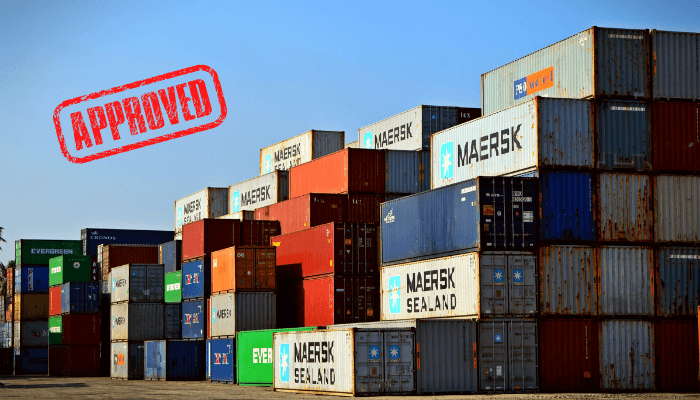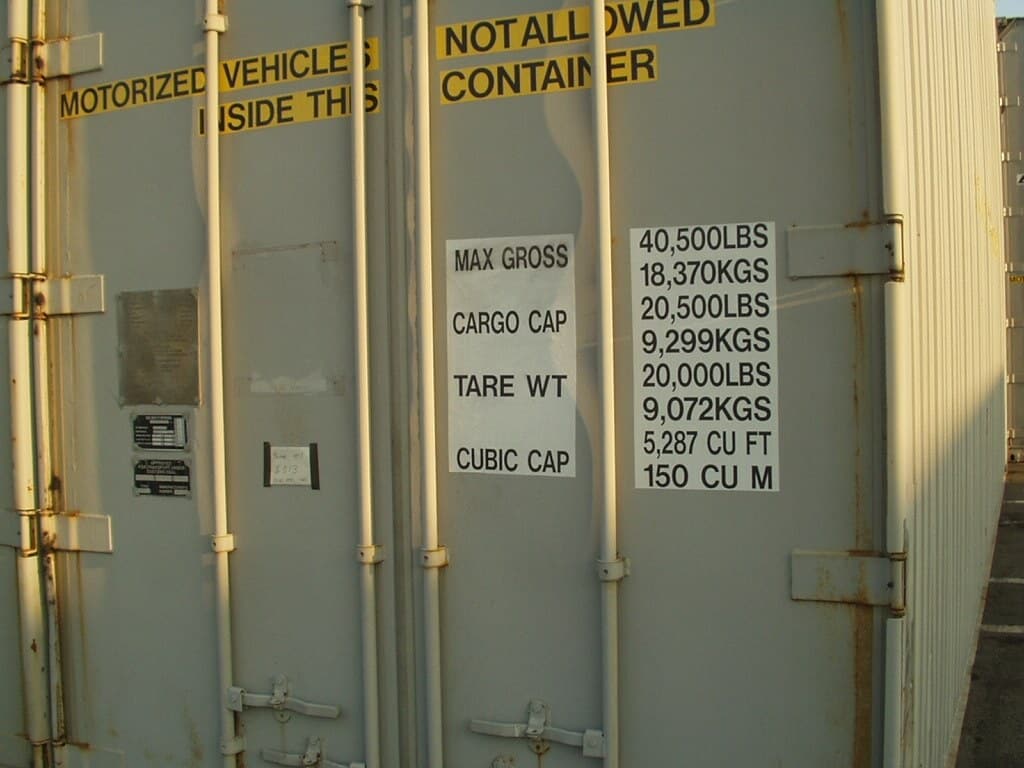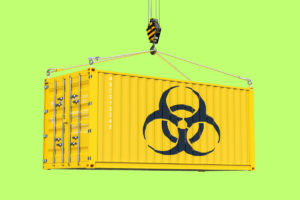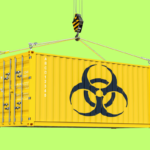Understanding the CSC Plate Of Shipping Containers
Intermodal freight containers play a very important role in global trade. Typically, goods are transported from one place to another over land or by sea, in containers, the common ones being a TEU (Twenty-foot Equivalent Unit or 20’ container) or FEU (Forty-foot Equivalent Unit or 40’ container).
For goods to be transported safely from point A to point B, perhaps with a few transhipment points on the way, a freight container has to meet certain conditions. It has to be sturdy and safe to withstand the handling, passage by road or rail as well as sea, and the weight of the cargo among other factors.
How do we decide that the container used for the transport of cargo is cargo-worthy?
Remember that most containers are transported from the seller’s warehouse or location to the port by road or rail. This is when most people remember a CSC plate!
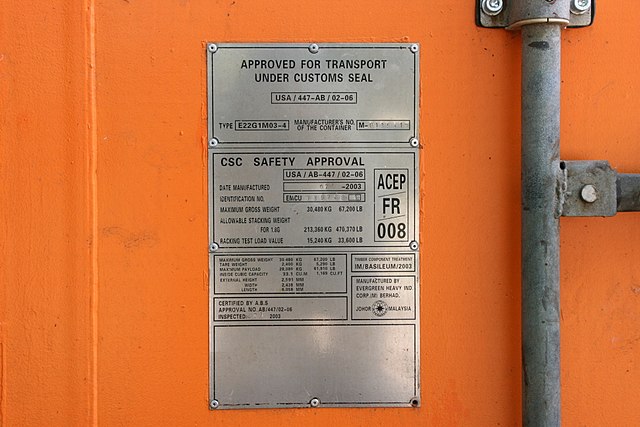
CSC stands for Convention for Safe Containers.
Freight containers that are used for intermodal transport, especially international transport, have small plates with data, fixed on them. These are usually found riveted to one of the container doors. This is the safety approval plate that contains the main details of the container.
The details shown on a CSC plate are as prescribed by the Convention for Safe Containers (1972). The CSC 1972 requires these minimum details to be displayed on all containers that are used in the transport of cargo.
The essential details that are shown on a CSC plate are the classification company approval code, month and year of manufacture of the container, manufacturer’s container ID number, gross weight of the container, stacking load value, racking test load value, and the next date for inspection of the container.
This rectangular plate with a minimum measurement of 200 mm X 100 mm should be made of a non-corrosive and fire-proof material.
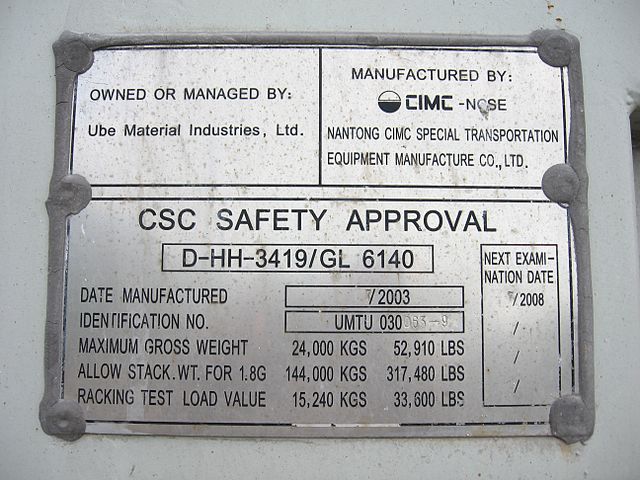
Container Inspection
Any freight container that is used to transport cargo has to go through an inspection once every 30 months. This inspection has to be carried out and certified by a CSC authorized inspector.
Upon successful completion of the inspection, the old CSC plate is removed and a new one is fixed. A container that has been acquired newly should be sent for inspection as above within 5 years from the date of its manufacture.
Convention for Safe Containers 1972 (CSC 1972)
This is a convention that was jointly organized by the United Nations (UN) and the International Maritime Organization (IMO) in 1972.
Known as CSC 1972, it is a set of uniform safety regulations that cover all transport containers above a prescribed size. These regulations promote and ensure the safety of those handling the freight containers.
It is a requirement under CSC 1972 for all freight containers covered by the convention, to have CSC approval plates that show the required details on them.
What is a Combined Data Plate?
Rules set forth by the IMO require several other different information to be displayed on containers, just as the CSC plate. These days most containers have a Combined Data Plate that carries the different information on a single plate.
The data shown on a Combined Data Plate generally includes the Customs Convention for Containers (CCC) reference to allow transport of cargo under customs seal, the reference for treatment done on the timber components of the container, and the name and details of the container operator with the approved container number. The Timber Treatment Reference is particularly applicable to containers that operate in and around Australia.
Contents of a CSC Plate
A valid CSC plate has the words ‘CSC SAFETY APPROVAL’ stamped on it in bold. These words can also be embossed or shown in any other way such that it is permanent.
The CSC specifies that the safety approval caption shall be in bold characters of a minimum height of 8 mm. All other characters on the plate should have a minimum height of 5 mm.
The other information that must be shown on a CSC plate are as follows:
Classification Company Approval Code
This code or reference shows the authorized company or society that was responsible for the approval of the container.
Date of Manufacture of the Container
Shows the month and year of manufacture of the container.
Manufacturer’s Container ID Number (for new containers)
The manufacturer gives each container a unique identification number. This is sometimes used as the general ID of the container. It may also be used to track the previous inspections the container has gone through.
Gross Weight
Also referred to as the Gross Mass, it is the total weight of the cargo and the weight of the empty container, that can be transported safely. It is shown in kilograms and LBS.
Stacking Load Value
A container onboard a ship experiences strong gravitational forces especially during rough weather when the ship is tossed up and down at sea. The stacking load value shows the weight that can be stacked safely on top of a container when it experiences a G-force of 1.8 g.
Racking Test Load Value
This value denotes the force that can be applied to the top edge of the container before the frame is twisted out of shape. It is also called the Transverse Racking Test Force.
First Maintenance Examination Date
This is the date when the container has to be inspected next by a classification company.
The details that are included on a Combined Data Plate are as follows:
Approval for Transport Under Customs Seal
When the container has the approval to transport cargo under customs seal the words ‘APPROVED FOR TRANSPORT UNDER CUSTOMS SEAL’ are shown in bold on the Combined Data Plate. Just as in the CSC plate, this caption should also be in bold characters of a minimum height of 8 mm.
Approval Reference
The approval reference shows the CSC rule numbers under which the container was approved by the relevant authorities.
Country of Approval
This shows the country where the container passed inspection and was approved.
Type
A container manufacturer may produce several types of containers that adhere to ISO standards. The ‘type’ on a CSC plate shows the container series of the manufacturer or the model of the container.
Container Number of the Operator
This is the unique container number given to each freight container following specifications laid down by the Bureau International des Containers (BIC).
Container Payload or Maximum Weight-bearing Capacity of the Container
Payload or maximum weight is the weight that can be transported safely inside the container. In other words, it is just the weight of the cargo that the container can hold. This is shown in kilograms as well as LBS.
Tare Weight
Tare weight is the weight of the empty container shown in kilograms and LBS.
Cubic Capacity
Some Combined Data Plates show the inside cubic capacity of the container. This is shown in cubic meters (CBM) as well as cubic feet (CFT).
Timber Component Treatment Reference
Typically, the floors of containers are made of bamboo or other suitable types of wood. The Timber Component Treatment Reference shows whether these wooden parts have been chemically treated with basileum, radaleum, talileum-400, or any other approved wood preservative for protection from pests.
Is the CSC Plate Necessary?
A valid CSC plate ensures that the container has been put through the required tests to ascertain its strength and specifications and that it meets the standards set by the International Standards Organization (ISO) and the Convention for Safe Containers (CSC).
Understanding a CSC plate or a Combined Data Plate is therefore very important when it comes to buying or leasing containers for transport, storage, or any other purposes. It is the container owner’s responsibility to maintain a container in good condition and ensure that it is inspected at the appropriate intervals.
The format of CSC plates may vary but the minimum data requirement is mandatory.
However, an important point to note is that even if a container has a valid CSC plate but is in a damaged condition, the container must be taken out of service for repair or scrapped immediately.
Disclaimer: The authors’ views expressed in this article do not necessarily reflect the views of Marine Insight. Data and charts, if used, in the article have been sourced from available information and have not been authenticated by any statutory authority. The author and Marine Insight do not claim it to be accurate nor accept any responsibility for the same. The views constitute only the opinions and do not constitute any guidelines or recommendation on any course of action to be followed by the reader.
The article or images cannot be reproduced, copied, shared or used in any form without the permission of the author and Marine Insight.
Do you have info to share with us ? Suggest a correction

About Author
Hari Menon is a Freelance writer with close to 20 years of professional experience in Logistics, Warehousing, Supply chain, and Contracts administration. An avid fitness freak, and bibliophile, he loves travelling too.
Latest Maritime law Articles You Would Like:
Latest News
- What are Logistics Risks?
- How Port and Terminal Operators Can Control Emissions?
- Minimum Quantity Commitment (MQC) and Liquidated Damages in Container Shipping: Concept and Relevance
- MARPOL (The International Convention for Prevention of Marine Pollution For Ships): The Ultimate Guide
- The Ultimate Shipping Container Dimensions Guide
- A Comprehensive Overview of IMDG Code for Shipping Dangerous Goods
Subscribe To Our Newsletters
By subscribing, you agree to our Privacy Policy and may receive occasional deal communications; you can unsubscribe anytime.



